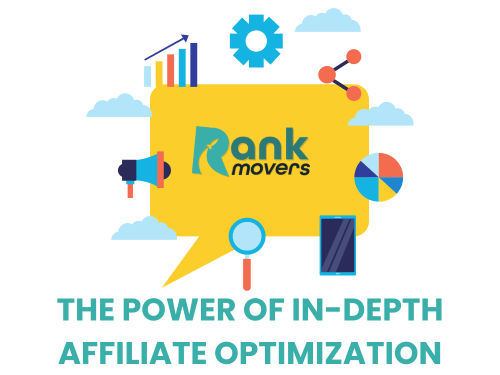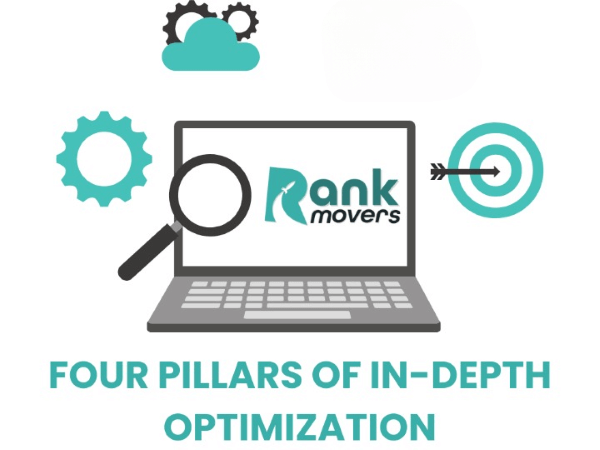What is In-depth Affiliate Optimization
In-depth Affiliate Optimization means carefully improving and boosting how well your affiliate program works. This includes looking closely at different parts of the program and making specific changes to make it work better. We analyze things like where our website visitors come from, how often they turn into customers, and the content we use.
Affiliate optimization is a continuous process where data is constantly checked and adjusted to make sure everything is working at its best. It’s like a constant cycle of improvement, making our program stronger and more effective over time. This ensures that we get the best results and have long-lasting success in digital marketing.

Understanding Affiliate Marketing
Affiliate marketing is like having a team of supporters who help sell your products or services, and in return, they earn a little something for each sale or lead they generate. It’s a win-win situation—partners or affiliates promote what you offer, and they get a commission for each successful sale or lead they bring your way. In the online world, this happens through unique links. Affiliates get special links that track when someone clicks on them and makes a purchase or signs up. It’s like a digital handshake—whenever a customer uses that link and buys something, the affiliate gets a reward.
Here’s a breakdown of the basic principles:
- Partner Network
- Merchants: Offer products or services and provide marketing materials and tracking links to affiliates.
- Affiliates: Promote the merchant’s offerings through various channels like websites, social media, email marketing, and influencer partnerships.
- Promotion and Tracking
- Affiliates use unique tracking links or codes to identify their referrals.
- Merchants track clicks, conversions, and sales generated through these links.
- Commission-based Compensation
- Affiliates earn a commission on each sale or lead they generate, typically a percentage of the sale value. Commissions can be fixed, tiered, or performance-based.
- Mutual Benefits:
- For merchants: Reach a wider audience, drive traffic and sales, and access targeted marketing channels. For affiliates: Earn commissions by promoting products they believe in and build an audience around their niche.
- Types of Affiliate Marketing:
- Unattached: Affiliates promote products not directly related to their niche.
- Involved: Affiliates specialize in and promote products relevant to their niche audience.
- Related: Affiliates promote products complementary to their own offerings.
Benefits of Affiliate Marketing
Cost-effective: Merchants pay only for performance, making it a low-risk marketing strategy.
Scalable: Easily expand your reach and target niche audiences through a network of affiliates.
Targeted marketing: Reach the right audience through affiliates who have built trust with their followers.
Brand awareness: Increase brand visibility and credibility through wider exposure.
Examples of Affiliate Marketing
Travel bloggers: Promote travel booking platforms like Booking.com or Expedia in exchange for commissions on bookings.
Tech reviewers: Recommend and review tech products with affiliate links to earn commissions on sales.
Key Factors for Success
Building strong relationships with affiliates: Providing support, resources, and timely communication.
Choosing the right affiliates: Partnering with individuals who align with your brand and target audience.
Creating high-quality content: Persuasive and informative content that resonates with the audience.
Data-driven optimization: Tracking performance, analyzing data, and making adjustments for continuous improvement.
The Need for Optimization
Affiliate marketing, like a vast ocean, offers boundless opportunities for success. But just like any journey across the sea, there are challenges to overcome. Here’s why optimizing your affiliate program is crucial:
Challenges
Imagine managing a ship with a multitude of sails, each representing an affiliate partner. Keeping track of their performance, ensuring smooth sailing, and navigating the constantly changing currents of the market can be daunting.
- Managing a large number of partners involves coordinating a diverse network of affiliates. This requires strong communication, clear expectations, and efficient tracking systems.
- Tracking performance data from website traffic to conversions helps one to understand how each affiliate is contributing and this requires robust analytics and data interpretation skills.
- Ensuring compliance this is accomplished by navigating legal requirements and adhering to the program rules. The rules can be complex, however your program’s performance can unlock hidden potential and chart a course towards success.
Maximizing ROI
Optimization can be your compass, by guiding you toward maximizing your return on investment (ROI). By delving into data and understanding your program’s performance, you can unlock hidden potential and chart a course toward success.
Data-driven optimization: data analysis provides this map, allowing you to identify opportunities for improvement and allocate resources strategically.
Improved efficiency: Optimization helps you streamline your processes, eliminate unnecessary tasks, and automate repetitive work.
Increased revenue: By optimizing your program, you can attract higher-performing affiliates, improve conversion rates, and ultimately boost your bottom line.
The Four Pillars of In-Depth Optimization

Just like a sturdy building needs a strong foundation, a successful affiliate program requires in-depth optimization. Here are the four key components that make up this gem:
Traffic Analysis: Unmasking Hidden Gems
Source Analysis: Analyze data from various channels like search engines, social media, and email marketing. These insights reveal which channels deliver the most valuable leads and conversions, allowing you to focus your efforts where they yield the most treasure.
Audience Segmentation: Divide your audience into distinct groups based on demographics and interests. Create personalized experiences for each segment, increasing engagement and conversion rates. Imagine a social media campaign targeting young gamers versus one targeting retirees; their interests and responses will differ vastly.
Geo-targeting: Analyze user location data and customize your campaigns to resonate with regional audiences.
Conversion Rate Optimization (CRO): Polishing Your Sales Funnel
Landing Page Analysis: Your landing page is like a shop window. Analyze your landing pages’ performance to identify areas for improvement. Optimize design, content, and call-to-action buttons for maximum impact. This can be achieved by using clear messages and enticing displays, attracting more customers. A/B testing allows you to compare different versions of your landing pages and affiliate materials. This helps identify the most effective elements, leading to higher conversion rates.
Call-to-Action Optimization: Craft compelling calls to action that are clear, concise, and irresistible. They should act as persuasive invitations for users to take the desired action, like subscribing or signing up to your site and making a deposit. Imagine replacing a weak call to action like “Learn More” with a powerful one like “Unlock Exclusive Discounts Now.”
Content Strategy
Relevance and Audience Alignment: Create content that resonates with your target audience. This can be done by writing blogs that speak to the customer’s needs and interests. This builds trust and connection, increasing engagement and conversions.
Quality Content Creation: Offer a diverse and engaging content buffet. Include text, visuals, multimedia elements, and even storytelling to cater to different preferences.
SEO Integration for Organic Reach: Boost your visibility and integrate SEO best practices into your content strategy to strengthen your organic search ranking. Optimize keywords, meta descriptions, and website structure to attract more visitors through organic searches.
Tools for In-depth Optimization: Your Secret Weapons
Optimizing your affiliate program is like building a strong castle – you need the right tools. Here are some powerful weapons in your arsenal:
Analytics Platforms
Popular analytics platforms like Google Analytics and affiliate marketing-specific tools act as your eyes and ears. These tools track key information like website traffic, conversions, and how your affiliates are performing. It’s like having a detailed map of your program, showing you where things are working and where they need improvement. Set specific goals for your affiliate program, and use the data from your analytics platforms to measure your progress and make adjustments as needed.
Automation Software
Automation software is like your loyal assistants, handling routine tasks like generating reports and managing emails. This saves you precious time and resources, allowing you to focus on optimizing your program for maximum impact. As technology advances, AI-driven tools are becoming your future knights. These tools use artificial intelligence to predict future trends and behavior, giving you a powerful advantage in the ever-changing world of affiliate marketing. Imagine knowing which products will be popular next or which partners will be most successful.
Conclusion
In-depth Affiliate Optimization means carefully improving and boosting how well your affiliate program works. This includes looking closely at different parts of the program and making specific changes to make it work better. We analyze things like where our website visitors come from, how often they turn into customers, and the content we use.
Affiliate optimization is a continuous process where data is constantly checked and adjusted to make sure everything is working at its best. It’s like a constant cycle of improvement, making our program stronger and more effective over time. This ensures that we get the best results and have long-lasting success in digital marketing.


